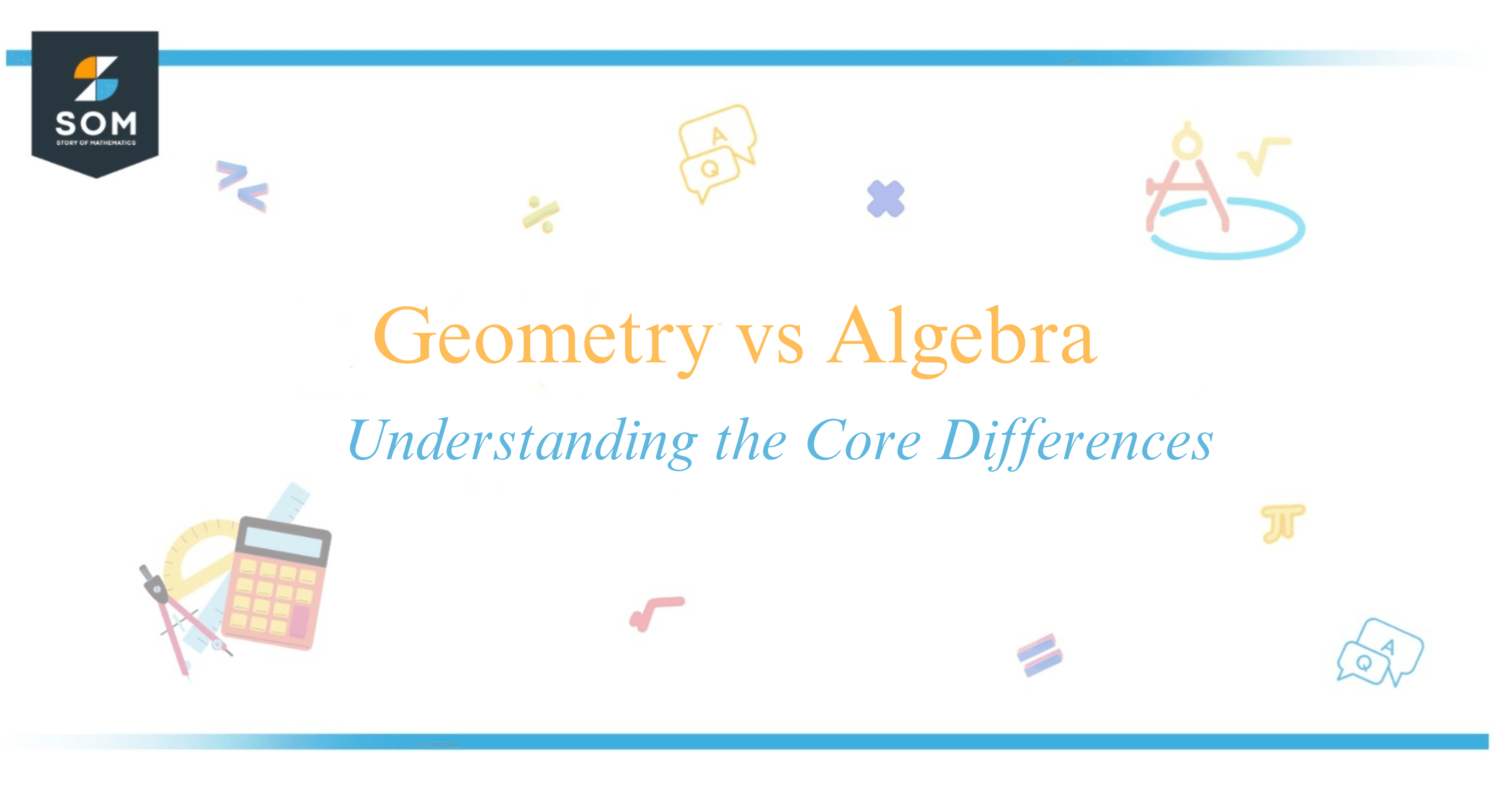 Geometry and algebra are two fundamental branches of mathematics, each with its unique challenges and applications. In geometry, I explore shapes, their properties, and the spatial relationships between them, which often involves a fair amount of visualization and memorization of theorems and formulas.
Geometry and algebra are two fundamental branches of mathematics, each with its unique challenges and applications. In geometry, I explore shapes, their properties, and the spatial relationships between them, which often involves a fair amount of visualization and memorization of theorems and formulas.
In contrast, algebra is the language of patterns and relationships among numbers, often expressed through equations and variables. While I find algebraic equations, represented as ( a$x^2$ + bx + c = 0 ), to be more abstract, requiring a different set of problem–solving skills, geometry can be tangible but equally intricate with its postulates and proofs.
Their relative difficulty often depends on my personal analytic versus visual inclinations, which is why my journey through these mathematical landscapes can be as rewarding as it is challenging.
Main Differences Between Geometry and Algebra
The main differences between geometry and algebra are found in their approaches to problem-solving, use of visual aids, focus on relationships, and fundamental rules.
Geometry often relies on visual intuition to understand the properties and relationships of shapes in space. Algebra uses abstract symbols to represent numbers and relationships, emphasizing operations such as addition, subtraction, multiplication, and division.
Geometry focuses on shapes, sizes, relative positions of figures, and the properties of space. The euclidean geometry, which is based on Euclid’s axioms, studies flat space using elements like points, lines, and planes, and it explores theorems about angles, congruence, and geometric figures.
Geometry Algebra Emphasizes visual reasoning Utilizes abstract reasoning Deals with measurements and properties of shapes Focuses on arithmetic and manipulation of unknown variables Uses axioms and theorems like those of Euclid Relies on equations and algebraic expressions Algebra is often more abstract and involves generalizing patterns using arithmetic on unknowns, which are represented by variables. The Elementary algebra includes solving equations like $ax + b = c$ for unknowns, while abstract algebra deals with structures such as groups, rings, and fields.
In geometry, I may have to calculate the area of a circle using the formula $A = \pi r^2$, where $r$ is the radius. In algebra, I might solve for an unknown variable in an equation, such as finding $x$ when $2x + 3 = 7$. These differences illustrate the distinct mental processes and techniques utilized in each branch of mathematics.
Applications and Integration
In exploring the roles of algebra and geometry, I find there’s a fascinating interplay between various branches of mathematics. Algebra provides me with tools to model and solve problems through equations and functions.

For instance, in physics and engineering, algebraic methods are vital for analyzing linear equations and formulating algorithms.
Geometry has a distinct position in spatial applications. When I work on architectural designs or study mapping techniques, geometry allows me to consider surfaces, solids, and the measurement of various-dimensional objects. Notably, analytic geometry blends algebra and Euclidean concepts, enabling intricate analysis of spatial figures.
I often use calculus—a field where algebra and geometry converge. In calculus, functions represent physical phenomena, and the principles of differential geometry lend insights into curved spaces, which are essential in relativity. Functions such as the Pythagorean theorem ($ a^2 + b^2 = c^2 $) remain important in numerous fields, from architecture to computer graphics.
Given below is a brief outline of how algebra and geometry serve in various applications:
| Field | Algebraic Application | Geometric Application |
|---|---|---|
| Engineering | Solving complex system dynamics using formulas | Spatial analysis of structures |
| Computer Science | Algorithm development and analysis | Rendering of 3D models |
| Physics | Mathematical analysis through number theory and vector calculus | Explaining theories like relativity |
| Architecture | Structural analysis using linear equations | Designing and mapping of physical spaces |
In my studies and work, I appreciate the strengths and focus of each mathematical branch. Algebra exercises my reasoning skills, whereas geometry enhances my understanding of spatial and measurement concepts. The integration of algebra and geometry provides comprehensive techniques that are crucial for mathematical analysis and applications in various fields.
Conclusion
In my exploration of algebra and geometry, I’ve found that each possesses distinct characteristics that cater to different cognitive skills. Algebra, which typically involves equations and formulas, represents numbers and quantities through variables. For instance, the quadratic formula $ax^2 + bx + c = 0$ is a core concept in algebra.
On the other hand, geometry is concerned with shapes and solids, dealing extensively with points, lines, and surfaces in various dimensions. The Pythagorean theorem, $a^2 + b^2 = c^2$, exemplifies geometric principles by relating the lengths of the sides of a right triangle.
I appreciate that students may find one subject more challenging than the other, largely due to the different thinking styles each requires. Algebra often appeals to those who are comfortable with abstract thought and manipulating symbols, whereas geometry resonates with individuals who excel in visualizing and understanding spatial structures.
Moreover, despite their differences, algebra and geometry are interconnected. Geometry can provide a visual understanding of algebraic concepts, while algebra offers a symbolic representation of geometric principles. This relationship between them enriches the study of mathematics as a whole, and champions the idea that diversity in thought and approach is not only necessary but beneficial for problem–solving.
